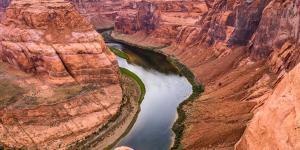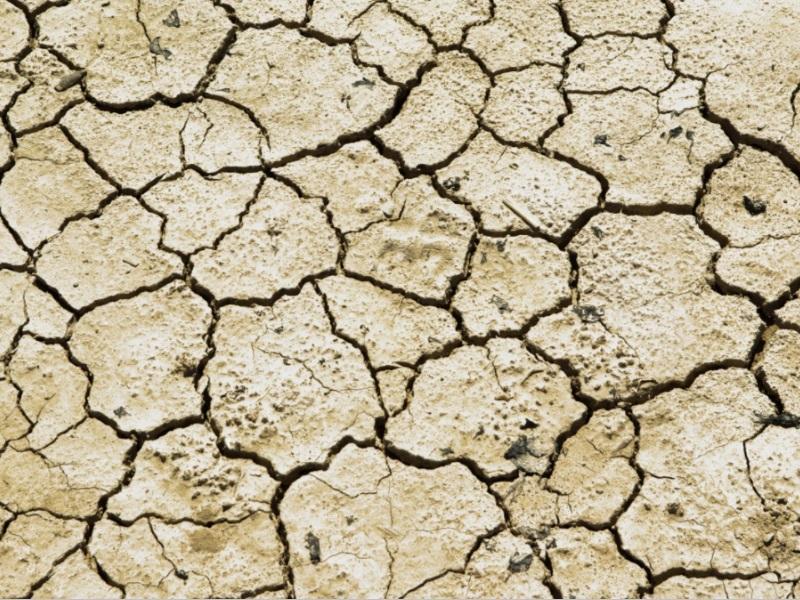Different Types of Erosion in Geography


Erosion is the process by which the outermost layer of land is gradually worn away. The land which is worn down is usually in the form of rock or soil. Land erosion is caused by the abrasive action of physical agents which exert force on the geographical material. These agents can be in the form of water, wind, ice and even human factors. Taking into account these different types of erosion in geography, we can see how these erosive processes can affect environments. thedailyECO explains more by looking at each type of land erosions, as well as their causes and consequences.
What is erosion in geography?
Erosion is the wearing away of various surfaces as a result of various abrasive processes. In geography, we refer to erosion as the abrasion of the Earth's surface. This surface is made up of various materials, including rock, soil, metals and other natural materials. When natural forces act upon them, they can be worn away over time. Such forces include water, wind, ice and even gravity.
When erosion occurs, the loose or dissolved products are transported from their place of origin along with other materials. They can become dissolved due to various physical, chemical and biological processes. These can either be directly due to the type of erosion or because the erosion speeds up other geographical processes.
Although this provides a basic definition of erosion in general, we can take a look at specific types or erosion in general to better understand its causes and consequences.
Types of erosion in geography
Erosion can take various forms, depending on its causes or the material that is being eroded, as well as other factors. It is for this reason we can differentiate erosion in geography into different types. The most common types of erosion in geography are the following:
- Wind erosion: is produced by the wind, which generally moves from high pressure to low pressure areas. Depending on its force, eroded materials can be transported long distances from one place to another.
- Water erosion: is caused by rainwater (pluvial erosion) and water flows (fluvial erosion). These transport worn rock particles and deposit them at lower altitudes. The movement of waves (marine erosion) uses their kinetic energy to transports particles to other places.
- Anthropic erosion: erosion that is generated by human beings and their activities.
- Glacial erosion: is caused by the blocks of glacial ice that move down slopes. Over time, glaciers erode the underlying rock surface, making it erosion by the force of gravity since the downward movement of ice and other particles is gravitational.
- Soil erosion: involves the loss of soil quality and can be caused by the types already mentioned.
Let us now look in more detail at these examples of erosion according to their type.
Wind erosion
Also known as eolian erosion, wind erosion is caused by the wind. It is particularly important in areas which experience strong winds and which have soils made up of very small particles. Such is the case with sandy soils which are exacerbated by intensive grazing during times of drought.
Wind erosion, in addition also contributes to the exposure of the soil surface. It can generate exposed and smooth areas on impermeable soils. Due to the absence of a soil surface, its low permeability and its generally high salt concentration, it is difficult to carry out revegetation of the area.
Furthermore, wind erosion tends to be more pronounced in sandier areas. These areas do not retain as much water and are considered to have low fertility. It is less prominent in crop-growing areas with coarse textures. in these areas, larger soil aggregates are formed that are too thick and heavy to be transported by the wind, even if it is strong.
Sandstorms are caused by the wind picking up loose sand or sandy soil which is lighter than most other types of soil. Learn more with our article on how sandstorms are formed.

Water erosion
Water plays an important role in the erosion of rocks since it wears down and transports eroded materials from one place to another and types of water erosion can be differentiated. These include fluvial, marine and pluvial water erosion. These erosive processes can be facilitated by human activity or occur naturally. In all cases, water from rivers, oceans and rain carry materials from their point of origin to a different area.
- Fluvial erosion (river erosion): river erosion can cause discoloration in river beds. As it flows from valleys to the oceans and seas, the erosive process generates a large accumulation of sediments that are deposited in new areas. Learn more about how sediment affects geographical areas with our article on how river deltas are formed.
- Marine erosion (sea erosion): another form of water erosion is caused by waves and currents from the sea. This force provided by coastal waters erodes and modifies the land. This also generates eroded particles that are deposited and change the coastline of the area in question. This type of erosion is a fundamental aspect of how icebergs are formed.
- Pluvial erosion (rain erosion): is caused by rainwater. This increases river size, increases fluvial erosion and wears down mountain walls, as well as eroding soils of all types. When there is acid rain, the wear is not only physical due to the friction of the water, but it increases wear due to chemical reactions and corrodes surfaces of all types.
Learn more about how soil erosion and rain can combine to make something known as mud rain or rain dust.

Anthropic erosion
Anthropic erosion is caused by human activities such as agriculture, industry, infrastructure construction, overgrazing, deforestation, transportation of people and goods, among many others. As a consequence of these actions, the loss of the surface layer of the soil occurs, so that an artificial soil is created that is highly influenced by this human activity.
Learn more about how human activity impacts our ecosystems with our article explaining the different types of environmental degradation.

Soil erosion
Soil erosion is the wear and tear of the surface layer of soil. It is caused by wind, water, crops or deforestation, among other factor. In this case, it is not the soil that is causing the erosion, but it is the soil which is being eroded. This type of erosion may also be due to temperature, gravity, chemical reactions and other factors.
It is the process by which the vegetation that protects the soil disappears, leaving it exposed and vulnerable to physical agents. An example is the exposure to precipitation that can cause soil loosening to the extent that landslides are created. If the soil being eroded contains chemicals such as fertilizers or insecticides reactions, it can also result in the release of toxic substances into rivers and streams.
Other effects derived from soil erosion include the reduction of soil quality due to the loss of nutrients from organic matter. This makes it difficult for vegetation to grow. Learn more about soil erosion and its consequences by investigating what is soil science study?

Glacial erosion
As its name indicates, glacial erosion is caused by glaciers, large accumulations of ice covered by snow. They are typical of mountain or coastal areas with large cliffs. If the ice base begins to melt, the glacier slides over the substrate, eroding it as it passes. When this happens, it collects materials along the way, such as grains of sand and large rocks. This erodes the bedrock, as well as eroding the ice itself and breaking up the glacier.
Learn more about how glacial movement and its subsequent erosion affects geographic landscapes with our article on what is a glacial moraine?

If you want to read similar articles to Different Types of Erosion in Geography, we recommend you visit our Environment (other) category.










